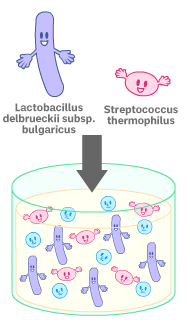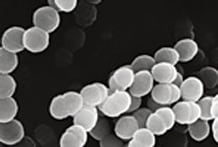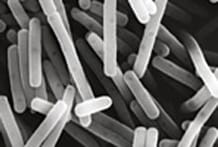|
Top page > Basic facts on yogurt > Yogurt ingredients
What are the ingredients of yogurt? Is yogurt a combination of milk and the health benefits of lactic acid bacteria?
The strong team of L. bulgaricus and S. thermophilusThese two species of lactic acid bacteria are the main active bacteria that produce yogurt through a natural process. These particular bacteria have been used to make yogurt since ancient times, as they are able to proliferate faster together than when used separately. Indeed, when L. bulgaricus and S. thermophilus are mixed into milk together, S. thermophilus, which is the faster grower of the two, increases in number quickly by feeding off small amounts of amino acids and peptides found in the milk, while producing the formic acid that L. bulgaricus needs to proliferate. Then, L. bulgaricus takes up this formic acid and grows its population while producing amino acids and peptides that promote the growth of S. thermophilus.
In other words, these two lactic acid bacteria used to make Bulgarian-style yogurt compensate for each other’s weakness to proliferate and produce large amounts of lactic acid in the process. Feature: Definition of yogurt
Japan: World:
|








